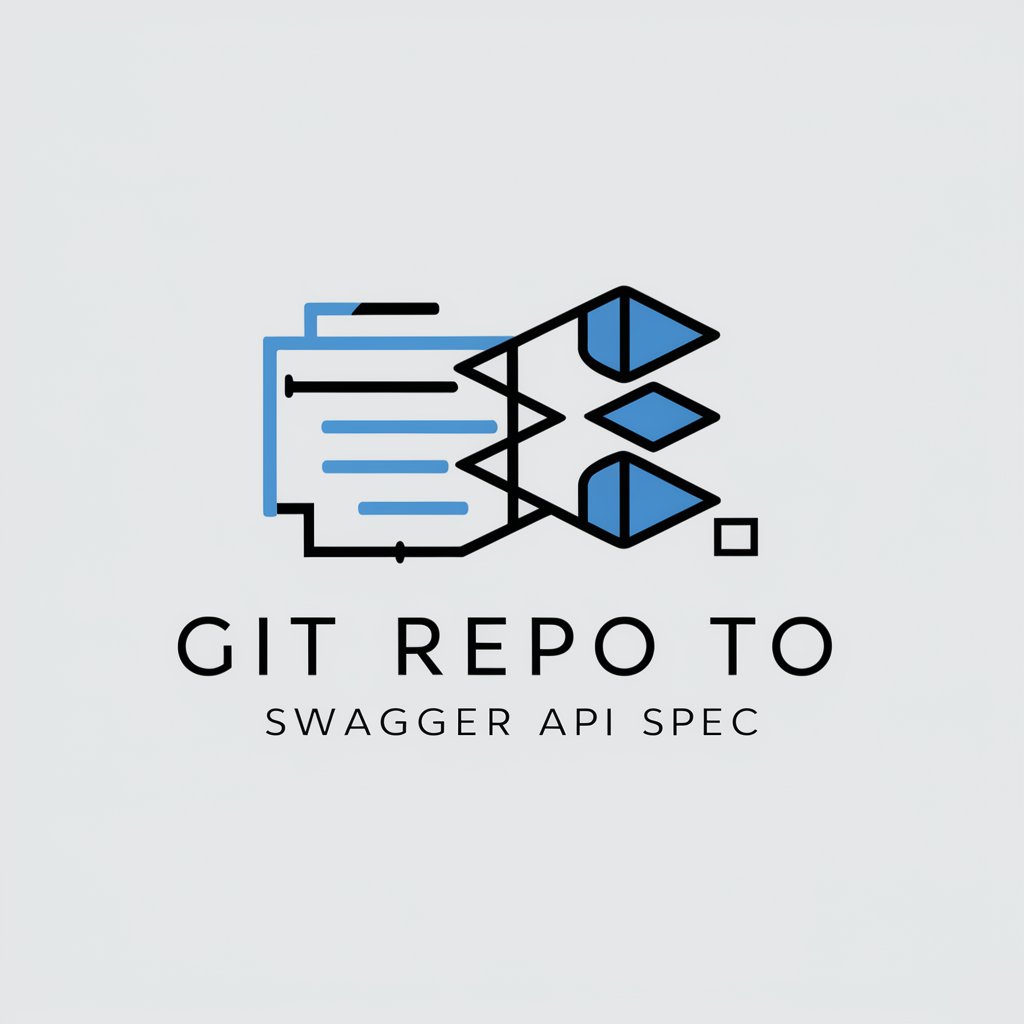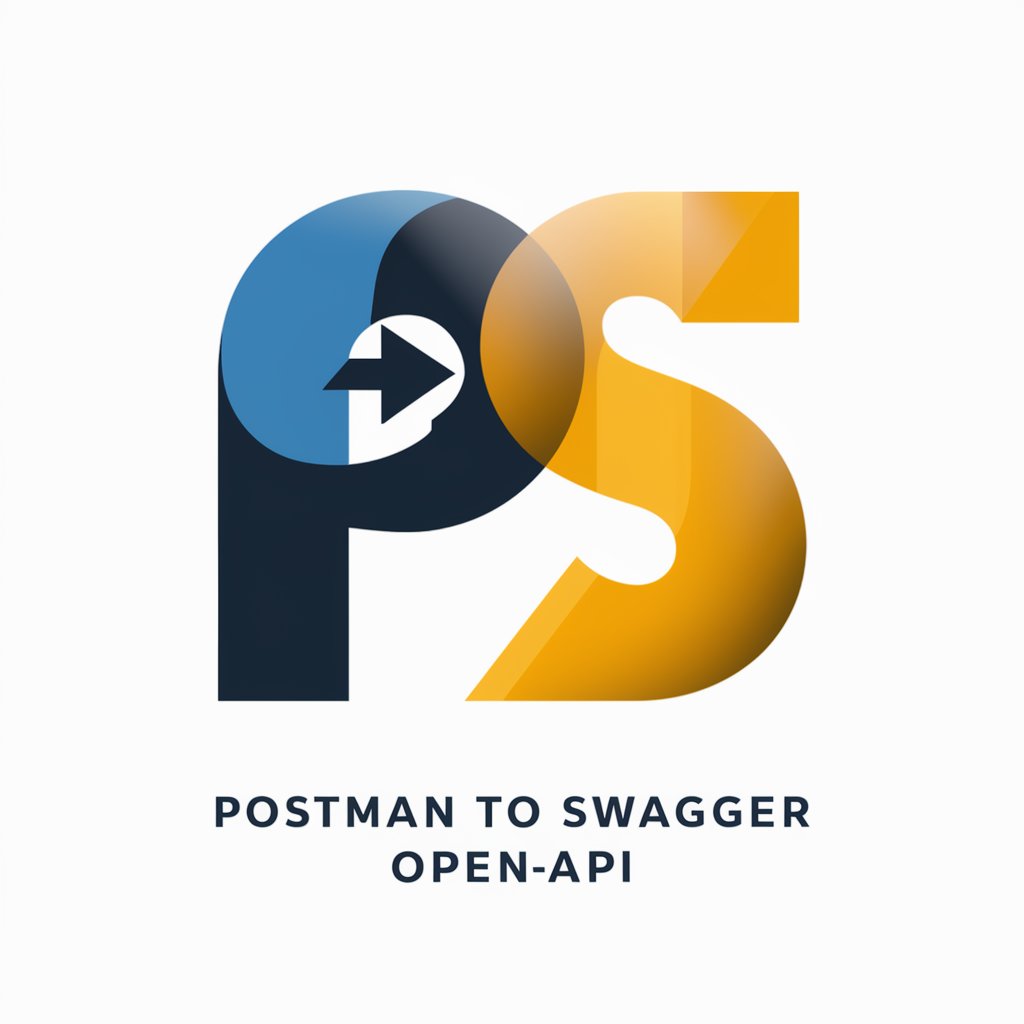
Git Repo to Swagger API Spec - GitHub to OpenAPI Spec

Welcome to the Git Repo to Swagger API Spec tool!
Automatically generate API specs from your repository.
Design a logo that represents a tool converting Git repositories to Swagger API specifications, with a focus on automation.
Create a logo for 'Git Repo to Swagger API Spec' that incorporates elements of coding and APIs, emphasizing efficiency.
Generate a modern logo for an AI tool that automates the creation of Swagger API specs from Git repositories.
Produce a sleek and professional logo for a tool named 'Git Repo to Swagger API Spec', highlighting technology and trust.
Get Embed Code
Introduction to Git Repo to Swagger API Spec
Git Repo to Swagger API Spec is designed to automate the process of creating OpenAPI Specification (OAS) documents from the source code hosted in a Git repository. It analyzes the repository's structure, identifies RESTful API endpoints, and extracts relevant information to produce a comprehensive OAS 3.0 YAML file. This YAML file can then be used with tools like Swagger UI or Redoc to generate interactive API documentation, or to facilitate API design and testing. A typical use case might involve a software project with RESTful APIs developed in languages like JavaScript, Python, or Java, where the API structure and documentation need to be kept in sync with the actual codebase. Powered by ChatGPT-4o。

Main Functions of Git Repo to Swagger API Spec
Repository Structure Analysis
Example
Analyzing a Node.js project to identify Express.js routes.
Scenario
A developer has a Node.js API project on GitHub. Using this service, the tool scans the project, identifying endpoints defined with Express.js, and extracts information such as path parameters, request methods, and response types.
OpenAPI Specification Generation
Example
Generating an OpenAPI 3.0 YAML file from identified API endpoints.
Scenario
After analyzing the API project, the service creates an OpenAPI 3.0 compliant YAML file, detailing all identified endpoints, their parameters, request bodies, and responses, making it ready for use with Swagger UI.
Documentation Updating
Example
Automatically updating API documentation when the source code changes.
Scenario
Whenever the API source code is updated, the tool can be re-run to update the OpenAPI spec, ensuring the API documentation always reflects the current API implementation.
Ideal Users of Git Repo to Swagger API Spec Services
API Developers
Developers or teams who regularly update their API implementations and need to ensure their API documentation remains synchronized with the codebase. This tool automates the documentation process, reducing the potential for discrepancies and saving time.
DevOps Teams
Teams responsible for CI/CD pipelines might integrate this tool to automatically generate and deploy updated API documentation with each code deployment, ensuring stakeholders always have access to the latest API documentation.
API Consumers
While not direct users, API consumers benefit from accurate, up-to-date documentation generated by this tool, facilitating easier integration and use of the APIs.

How to Use Git Repo to Swagger API Spec
1. Initiate Your Experience
Begin by visiting a platform offering the tool for an accessible, login-free trial, ensuring a hassle-free start without the necessity for ChatGPT Plus.
2. Select Your Repository
Provide the GitHub repository URL, including the organization/user, repository name, and branch, to specify the codebase for API documentation generation.
3. Identify Technologies
Inform the tool about the main technologies used in your project, such as RESTful APIs, to help it accurately parse and document your API.
4. Generate API Specification
Allow the tool to analyze your repository's structure and relevant files, automatically generating an OpenAPI specification in YAML format.
5. Review and Refine
Examine the generated API spec for accuracy and completeness. Make adjustments if necessary to ensure it fully represents your API's capabilities.
Try other advanced and practical GPTs
NestJS Helper
Your AI-powered NestJS companion

Swagger Expert
Elevate Your API Documentation with AI

What is Money?
Enlightening Financial Minds with AI

Swagger Match
AI-Powered, Compatibility-First Dating

Waggers' Tales
Tail-wagging Tales, AI-powered Insights

SwaggerQA
Automate API Testing with AI

Swagger Scribe
Simplifying API Documentation with AI

Postman to Swagger OpenApi
Seamlessly transform Postman collections into Swagger format.

Swagger Generator
Automate Your API Docs with AI

Legends Coin Flip
Flip a coin, let AI decide your fate.

Flip Assist
AI-Powered Real Estate Flipping Guide

Flip a Coin
Flip a coin with AI precision

Frequently Asked Questions about Git Repo to Swagger API Spec
What is Git Repo to Swagger API Spec?
It's a tool that automatically generates OpenAPI (Swagger) specification files in YAML format from the contents of a given GitHub repository.
Which technologies can it analyze?
Primarily designed for RESTful APIs, it can analyze projects built with various backend technologies, assuming they follow standard API design practices.
Do I need to configure anything in my repo?
No specific configuration is required, but your API endpoints and structures should be clearly defined and documented within your codebase for optimal results.
Can it generate specs for private repositories?
Yes, as long as you provide the necessary permissions or credentials, it can access and generate specs for private GitHub repositories.
How do I use the generated YAML file?
The YAML file can be imported into tools like Swagger UI or Redoc to visualize and interact with your API documentation.